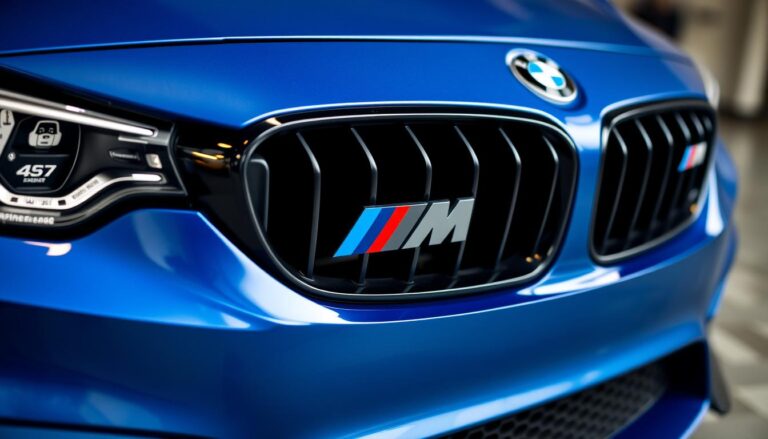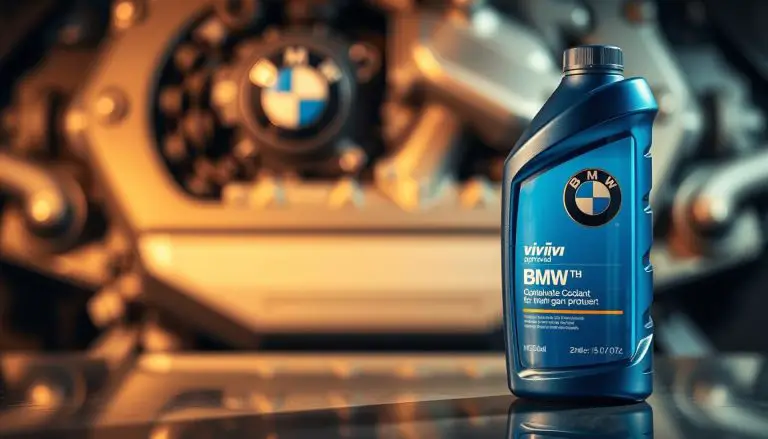The BMW X3 combines luxury, performance, and practicality in a compact SUV package that’s appealing to many drivers. However, not all model years deliver the reliability you’d expect from a premium German brand. Before investing in a used BMW X3, it’s crucial to know which years have earned a reputation for problems and which ones offer better long-term value.
This guide identifies the BMW X3 years to avoid, explains their common issues, and suggests more reliable alternatives to help you make a smarter purchasing decision.
BMW X3 History and Generations Overview
Since its introduction in 2003, the BMW X3 has evolved through four generations, each with its own strengths and weaknesses. Understanding these generations helps identify which BMW X3 years to avoid and which ones might be worth your consideration.
| Generation | Model Years | Engine Options | Key Features | Reliability Rating |
| 1st Gen (E83) | 2004-2010 | 2.5L I6, 3.0L I6 | Standard xDrive AWD, manual transmission option | 2.5/5 |
| 2nd Gen (F25) | 2011-2017 | 2.0L I4 Turbo, 3.0L I6 Turbo, 2.0L Diesel | Improved interior, iDrive system | 2.0/5 |
| 3rd Gen (G01) | 2018-2024 | 2.0L I4 Turbo, 3.0L I6 Turbo, PHEV | M Performance models, digital cockpit | 3.5/5 |
| 4th Gen (G45) | 2025-present | 2.0L I4 Turbo, 3.0L I6 Turbo (mild hybrid) | Mild hybrid technology, updated design | TBD |
While the BMW X3 offers impressive driving dynamics and luxury features, certain model years have developed a reputation for reliability issues. Let’s examine which BMW X3 years to avoid and why they’ve earned this distinction.
Worst BMW X3 Model Years to Avoid
Based on reliability data from sources like Consumer Reports, NHTSA complaints, and owner feedback, these are the BMW X3 model years with the most significant problems. Understanding these issues can help you avoid potentially expensive repairs down the road.

2013 BMW X3 (F25 Generation)
The 2013 BMW X3 is widely considered the worst model year in the X3 lineup. With over 300 NHTSA complaints and numerous reports on Car Complaints, this model year has earned its place at the top of the BMW X3 years to avoid list.
Major Issues with 2013 BMW X3
- Broken timing chain guide: The most reported problem is the plastic timing chain guide breaking, which can cause the engine to stall or shut down completely while driving.
- Engine failure: Many owners experienced complete engine failure, often requiring replacement at costs exceeding $7,000.
- Drivetrain problems: Defective differentials and transmission issues were common complaints.
- Safety restraint system failures: Airbag and passenger safety restraint warning messages appeared frequently.
“The 2013 BMW X3 has the most overall complaints, and we rate 2013 as the worst model year ranked on several factors such as repair cost and average mileage when problems occur. The most-reported problem is with the 2013 BMW X3 because of a broken timing chain guide.”
2007 BMW X3 (E83 Generation)
While not as problematic as the 2013 model, the 2007 BMW X3 has several significant issues that place it among the BMW X3 years to avoid.
Common Problems with 2007 BMW X3
- Oil leaks: Cracked or deteriorating valve cover gaskets led to frequent oil leaks, especially in higher mileage vehicles.
- Coolant leaks: Problems with the radiator and coolant expansion tank caused overheating issues.
- Engine mount bolt failure: This could lead to engine movement and additional component damage.
2014 BMW X3 (F25 Generation)
Following the problematic 2013 model, the 2014 BMW X3 continued to have reliability issues that make it one of the BMW X3 years to avoid.
Major Issues with 2014 BMW X3
- Body hardware problems: Stress cracks on glass and issues with the sunroof were commonly reported.
- Engine computer malfunctions: False warning signals about low oil or check engine lights appeared frequently.
- Poor reliability rating: Consumer Reports gave it a 1 out of 5 overall reliability rating.
Considering a Used BMW X3?
Before purchasing, get a comprehensive pre-purchase inspection from a BMW specialist. This small investment could save you thousands in future repairs.
2017 BMW X3 (F25 Generation)
The 2017 BMW X3 is another model year with significant issues that earned it a spot on our BMW X3 years to avoid list.

Major Issues with 2017 BMW X3
- Brake system failures: Multiple reports of complete brake system failure, creating dangerous driving conditions.
- Climate system problems: Faulty air conditioning and thermostat issues, especially during longer trips.
- Low reliability rating: Consumer Reports gave it a 2 out of 5 overall reliability rating.
2019 BMW X3 (G01 Generation)
While the third-generation X3 models generally improved in reliability, the 2019 model still had some issues that potential buyers should be aware of.
Common Problems with 2019 BMW X3
- Electronics issues: Problems with in-car electronics, particularly with Apple CarPlay functionality.
- Software update problems: Software updates often caused more issues than they fixed.
- Tailgate malfunctions: Reports of the tailgate opening on its own, even when the vehicle was parked and locked.
Common BMW X3 Problems by Generation
Beyond the specific model years to avoid, certain issues tend to affect entire generations of the BMW X3. Understanding these common problems can help you identify potential issues when shopping for a used X3.

First Generation (E83: 2004-2010)
- Oil leaks: Valve cover gaskets and oil filter housing gaskets commonly develop leaks.
- Cooling system failures: Water pumps, thermostats, and expansion tanks are frequent failure points.
- Sunroof issues: Leaks and rattling noises are common complaints.
- Transfer case failures: Can lead to expensive drivetrain repairs.
- Window regulator problems: Windows may not open or close properly.
Second Generation (F25: 2011-2017)
- Timing chain failures: Particularly in models with the N20 four-cylinder engine.
- Oil leaks: Valve cover and oil pan gaskets commonly leak.
- Electric water pump failures: Can lead to overheating and expensive repairs.
- Steering issues: Heavy steering or loss of power steering assistance.
- EGR system problems: Common in diesel variants, causing rough idling and decreased performance.
Third Generation (G01: 2018-2024)
- Electronics issues: Infotainment system glitches and software problems.
- Tailgate malfunctions: Spontaneous opening or failure to open/close.
- Cooling system problems: Though improved, still a potential issue.
- Brake system complaints: Premature wear and occasional failures.
What to Look For When Buying a Used BMW X3
When inspecting a used BMW X3, pay special attention to these common problem areas:
- Check for oil leaks around the valve cover and oil filter housing
- Listen for timing chain rattle during startup
- Test all electronic features, including the infotainment system
- Inspect the cooling system for leaks or corrosion
- Verify the service history, especially timing chain replacements on F25 models
- Test the braking system thoroughly during the test drive
Most Reliable BMW X3 Years to Buy
Not all BMW X3 model years should be avoided. Some years have proven to be more reliable and may offer better value for used car shoppers. Based on reliability data and owner feedback, these are the BMW X3 model years worth considering.

2005 BMW X3 (E83 Generation)
If you’re looking at first-generation X3 models, the 2005 model year is one of the better options. It handles well and has fewer reported issues with exterior accessories and windows compared to other years in this generation.
2005 BMW X3 Strengths
- Excellent handling and driving dynamics
- Good shifting response
- Fewer major mechanical issues than later E83 models
- Standard all-wheel drive system
2016 BMW X3 (F25 Generation)
The 2016 BMW X3 stands out as one of the more reliable options in the second generation. It received a 4 out of 5 overall reliability score from Consumer Reports and has fewer serious issues than earlier F25 models.
2016 BMW X3 Strengths
- Improved timing chain design compared to earlier F25 models
- Strong J.D. Power quality and reliability rating (86/100)
- Fewer drivetrain issues than 2013-2014 models
- Better build quality overall
2021 BMW X3 (G01 Generation)
For those with a higher budget, the 2021 BMW X3 offers excellent reliability combined with modern features. It has received high reliability scores across the board and benefits from improvements made throughout the G01 generation’s production run.

2021 BMW X3 Strengths
- J.D. Power Quality & Reliability score of 80/100
- Low CarFax likelihood of repairs (18%)
- Diverse powertrain options, including plug-in hybrid
- Modern technology and safety features
- Improved build quality from earlier G01 models
Ready to Find a Reliable BMW X3?
Use this vehicle history report tool to check for previous accidents, service records, and recall information before making your purchase.
Best Alternatives to Problematic BMW X3 Years
If you’re concerned about the reliability issues associated with certain BMW X3 years to avoid, consider these alternatives that offer similar luxury, performance, and utility with potentially better reliability.

Luxury Compact SUV Alternatives
Audi Q5
The Audi Q5 offers comparable luxury and performance to the BMW X3 with generally better reliability ratings, especially in model years 2018 and newer. The Q5 features Audi’s excellent Quattro all-wheel-drive system and high-quality interior materials.
Lexus NX
If reliability is your top priority, the Lexus NX consistently ranks among the most dependable luxury compact SUVs. While it may not match the BMW X3’s driving dynamics, it offers excellent build quality, lower maintenance costs, and Toyota’s reputation for longevity.
Mercedes-Benz GLC
The Mercedes-Benz GLC provides a more comfort-oriented luxury experience compared to the X3’s sportier character. Post-2017 GLC models have shown good reliability ratings and offer excellent safety features and interior quality.
Non-Luxury Alternatives with Premium Features

Mazda CX-5
The Mazda CX-5 offers near-luxury quality and driving dynamics at a more affordable price point. Recent model years feature upscale interiors, responsive handling, and excellent reliability ratings that often surpass luxury competitors.
Acura RDX
Honda’s luxury division offers the RDX as a sporty, reliable alternative to the BMW X3. With strong performance from its turbocharged engine and a well-built interior, the RDX provides a compelling package with better predicted reliability.
Volvo XC60
The Volvo XC60 stands out with class-leading safety features, distinctive Scandinavian design, and comfortable accommodations. Models from 2018 onward offer improved reliability compared to earlier generations.
| Model | Reliability Rating | Avg. Maintenance Cost | Performance | Luxury Features |
| BMW X3 (Best Years) | 3.5/5 | $1,034/year | Excellent | Excellent |
| Audi Q5 | 3.0/5 | $928/year | Very Good | Excellent |
| Lexus NX | 4.5/5 | $690/year | Good | Very Good |
| Mercedes GLC | 3.0/5 | $908/year | Very Good | Excellent |
| Mazda CX-5 | 4.5/5 | $447/year | Very Good | Good |
Maintenance Tips for Used BMW X3 Owners
If you already own one of the BMW X3 years to avoid or are still considering purchasing one despite the potential issues, following these maintenance tips can help extend the life of your vehicle and prevent costly repairs.

Essential Preventative Maintenance
Engine and Cooling System
- Oil changes: Use only BMW-approved synthetic oil and change every 5,000-7,500 miles, not the 10,000+ miles BMW sometimes recommends.
- Cooling system inspection: Check for leaks and replace the water pump preventatively around 60,000 miles, especially on F25 models.
- Timing chain maintenance: For F25 models with the N20 engine, consider preventative timing chain replacement around 70,000 miles.
- Valve cover gasket inspection: Check regularly for oil leaks, especially on E83 and early F25 models.
Transmission and Drivetrain
- Transmission fluid: Despite BMW’s “lifetime fluid” claims, change transmission fluid every 50,000-60,000 miles.
- Transfer case fluid: Change every 50,000 miles to prevent expensive AWD system failures.
- Differential fluid: Replace every 50,000 miles, especially important for 2013-2014 models prone to differential issues.
- Driveshaft flex disc: Inspect regularly for cracks or damage.
Finding a Reliable BMW Specialist
One of the best ways to maintain your BMW X3 and avoid costly repairs is to find a reputable independent BMW specialist rather than relying solely on dealership service. Independent specialists often charge less than dealerships while having specific expertise with common BMW issues.

Questions to Ask a BMW Specialist
- What experience do you have with my specific X3 model year and its common issues?
- Do you use OEM, genuine BMW, or quality aftermarket parts?
- What preventative maintenance do you recommend for my specific model year?
- Can you provide a maintenance schedule tailored to my driving habits?
- Do you offer pre-purchase inspections for used BMW X3s?
Protect Your BMW X3 Investment
Consider an extended warranty for additional peace of mind, especially if you own one of the BMW X3 years to avoid. Compare warranty options from reputable providers.
Frequently Asked Questions About BMW X3 Reliability
Which BMW X3 years should I avoid?
Based on reliability data and owner complaints, the BMW X3 years to avoid include 2007, 2013, 2014, 2017, and 2019. The 2013 model year is widely considered the worst, with significant issues related to the timing chain guide, engine failures, and drivetrain problems.
Is the BMW X3 a reliable vehicle overall?
The BMW X3 has below-average reliability compared to other luxury compact SUVs. RepairPal gives the X3 a reliability rating of 2.5 out of 5.0, ranking it 10th out of 11 luxury compact SUVs. However, reliability varies significantly by model year, with newer generations generally showing improvement.
What are the most common problems with the BMW X3?
The most common BMW X3 problems include broken timing chain guides (especially in 2013-2014 models), oil leaks from valve cover gaskets, cooling system failures, electrical issues, and sunroof leaks and rattles. The severity and frequency of these issues vary by generation and model year.
Which BMW X3 years are the most reliable?
The most reliable BMW X3 model years include 2005 (first generation), 2016 (second generation), and 2021 (third generation). These years have fewer reported issues and higher reliability ratings from sources like Consumer Reports and J.D. Power.
How expensive is it to maintain a BMW X3?
The average annual maintenance cost for a BMW X3 is approximately $1,034, which is higher than the average for luxury compact SUVs ($859) and significantly higher than non-luxury compact SUVs ($521). Maintenance costs tend to increase dramatically after the warranty period expires, especially for the BMW X3 years to avoid.
Conclusion: Making an Informed BMW X3 Purchase Decision
The BMW X3 offers an appealing combination of luxury, performance, and practicality, but choosing the right model year is crucial to avoid potentially expensive problems. By steering clear of the BMW X3 years to avoid—particularly the 2013, 2007, 2014, 2017, and 2019 models—and focusing on more reliable years like 2005, 2016, and 2021, you can enjoy the X3 experience with greater peace of mind.

Remember that even the most reliable BMW X3 will require more maintenance than many non-luxury alternatives. Budget accordingly for maintenance costs, consider an extended warranty for older models, and develop a relationship with a trusted BMW specialist to maximize your ownership experience.
If reliability is your top priority, alternatives like the Lexus NX or Mazda CX-5 might better meet your needs while still providing an upscale driving experience. However, if you’re set on the BMW X3’s unique blend of attributes, choosing one of the more reliable model years and following our maintenance recommendations will help you enjoy this luxury compact SUV for years to come.


